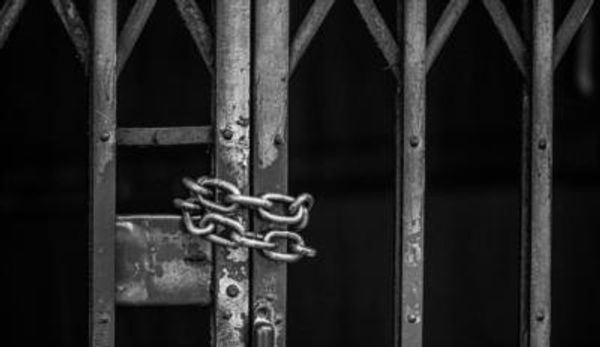
Nearly one month has passed since the biggest land invasion in Europe since World War II, and there have been no major breakthroughs on the battlefield or the negotiating table.
Russian forces appear bogged down outside major cities in the face of fierce Ukrainian resistance. Strikes on cities across the country were wreaking a patchwork of destruction.
Ukraine's capital Kyiv shook early Wednesday with Russian shelling that sparked fires in high-rise buildings, injuring four people. Russian bombs destroyed a critical bridge that had connected Ukraine's encircled city of Chernihiv to the capital and allowed aid to get inside.
In Kyiv's suburbs, artillery thundered as Ukrainian forces fought tooth and nail to hold back the Russian invasion.
Western intelligence assessments say Russia’s military losses are mounting. But human suffering is deepening in Ukraine’s besieged and ruined cities, where people are fighting to survive with little food, water, power or heat.
President Joe Biden is set to head to Brussels on Wednesday to meet NATO leaders about the war.
WHAT IS THE STATUS OF UKRAINIAN CITIES UNDER ATTACK?
The capital of Kyiv remains under fire. Barrages of shelling and loud gunfire rocked the city on Wednesday, striking a shopping mall and high-rise buildings in the districts of Sviatoshynskyi and Shevchenkivskyi.
Fires from shelling injured four residents, city officials said. The wail of air raid sirens sounded out. Plumes of black smoke rose over the western outskirts.
Russian forces continued bombing the ancient city of Chernihiv in northern Ukraine, the governor said Wednesday, destroying a key bridge that connected the encircled city to Kyiv.
The bridge was critical for evacuations and aid deliveries into besieged Chernihiv, where city officials say residents are without clean water and gas for cooking and heating.
On the capital’s western outskirts, Ukrainian troops were trying to strike back at stalled Russian forces seeking to capture and encircle the suburbs. Ukrainian forces managed on Tuesday to retake the suburban city of Makariv, allowing them to claw back a critical highway and block Russian troops from surrounding Kyiv from the northwest.
Ukrainian forces partially lost three other northwestern suburbs, however, the defense ministry said.
Russian warships are increasingly pounding the port city of Mariupol from the sea, the Pentagon has assessed, noting that about seven Russian ships are in the area, including a minesweeper and landing vessels.
Controlling Mariupol would give Russia a coveted land corridor to Crimea, which Moscow annexed eight years ago.
The U.S. has calculated that Russia has lost more than 10% of its original combat capacity, including troops, tanks and other materiel. The Pentagon said that Ukrainian forces have begun to go on the offensive in parts of the country, like the southern city of Kherson that was captured earlier in the war.
WHAT IS HAPPENING IN MARIUPOL?
Mariupol, a strategic port city on the Sea of Azov, has become a vivid symbol of the war’s savage destruction.
Some 100,000 people remain trapped inside the city, Ukraine's president says, struggling to survive without heat, food or clean water and subject to relentless Russian bombardment from the sea and skies.
Zelenskyy said that 7,000 people managed to escape in the latest evacuation on Tuesday. He also accused the Russians of seizing a humanitarian convoy trying to get desperately needed food and other supplies into the bloodied city, and of taking the drivers captive.
Russian missiles have slammed into civilian buildings — including a school and a theater known to be sheltering hundreds of people underground. Bodies are shoved into mass graves.
In the words of U.N. Secretary-General Antonio Guterres it’s a “living hell.”
In the latest from Ukrainian President Volodymyr Zelenskyy, it’s “inhumane.”
In the eyes of Viktoria Totsen, 39, who arrived in a Polish border town Tuesday after fleeing the city, it’s “99% destroyed.”
WHAT HAS THE AP DIRECTLY WITNESSED OR CONFIRMED?
More than 3.5 million people have fled the war in Ukraine, according to the U.N. refugee agency, as the humanitarian situation worsens.
Ukrainians who escaped pitched battles spoke to The Associated Press in the western Ukrainian city of Lviv, where thousands were arriving and thousands more were leaving to join a mass Ukrainian exodus into Poland and other nations.
Julia Krytskaa choked back tears from the Lviv train station while describing what she fled in Mariupol.
“People don’t have water, they drink water that’s not even the water you would use for technical purposes," she said. "There is no one you can ask for help.”
In the Ukrainian seaside city of Odesa, fondly known as the Pearl of the Black Sea, street musicians played under cloudless skies as people fled.
Odesa has so far avoided the worst of Russia’s onslaughts, but a major attack on Ukraine's biggest port city seems inevitable. Anxiety is growing. The streets are stacked with sandbags and barricades. Tearful families wave goodbye to loved ones at the train station.
“I can’t understand what has happened," Igor Topsi, a musician, told the AP.
WHAT ARE WORLD LEADERS DOING ABOUT THE WAR?
President Joe Biden heads to Brussels on Wednesday for talks with key allies, an effort to try to halt the war's tailspin into an even greater catastrophe.
Biden is expected to roll out new sanctions on Russia and coordinate more military assistance for Ukraine. He's also working on long-term efforts to boost defenses in Eastern Europe and wean the continent off Russian oil and gas, the White House said.
The United Nations on Wednesday will face three resolutions on the spiraling humanitarian situation in Ukraine — each one hinting at bitter political divisions within the world body.
One resolution supported by Ukraine and the West holds Russia responsible for the humanitarian crisis. A second sponsored by South Africa makes no mention of Russia at all. A Russian Security Council resolution on the war says nothing about its invasion.







